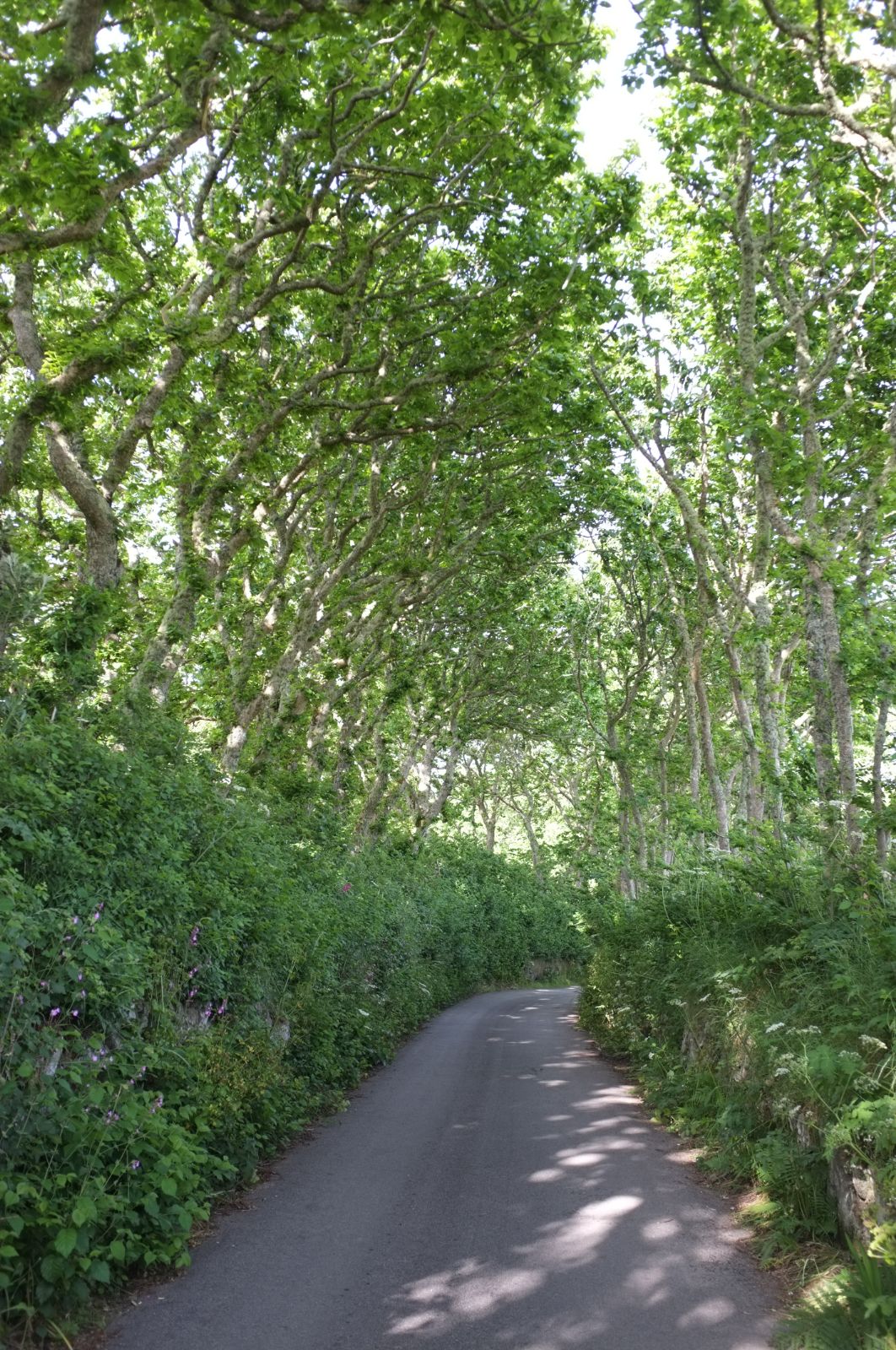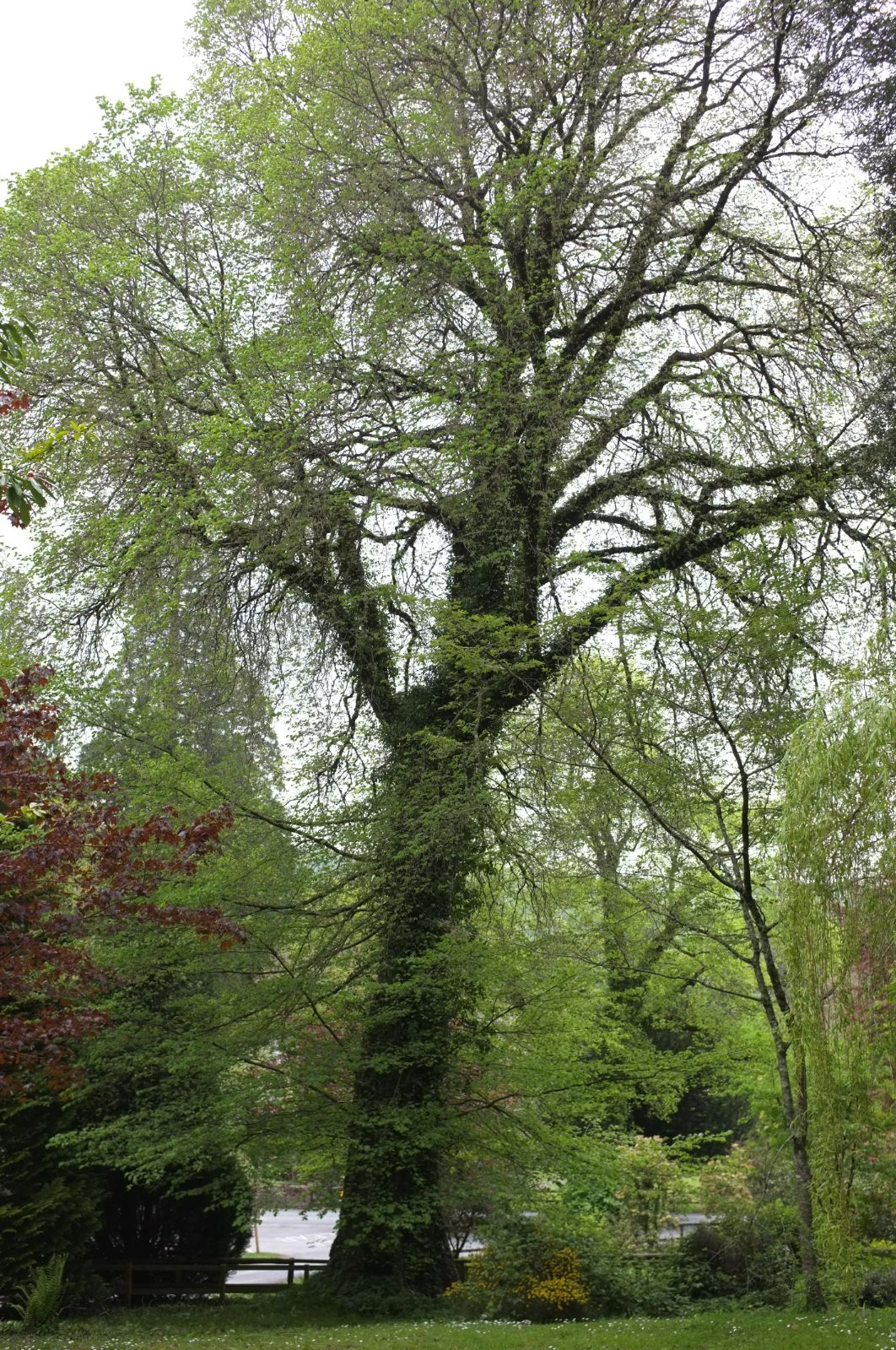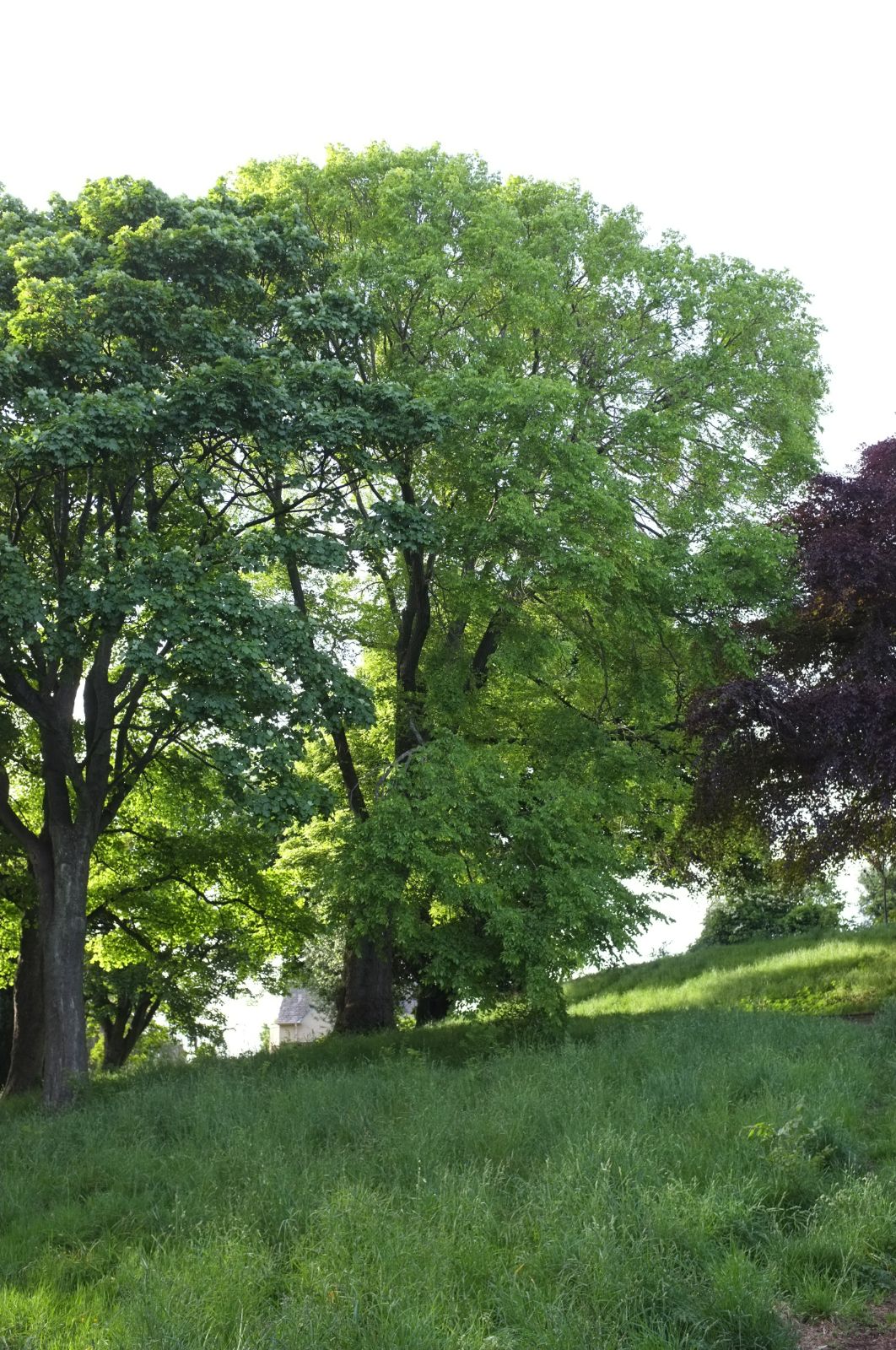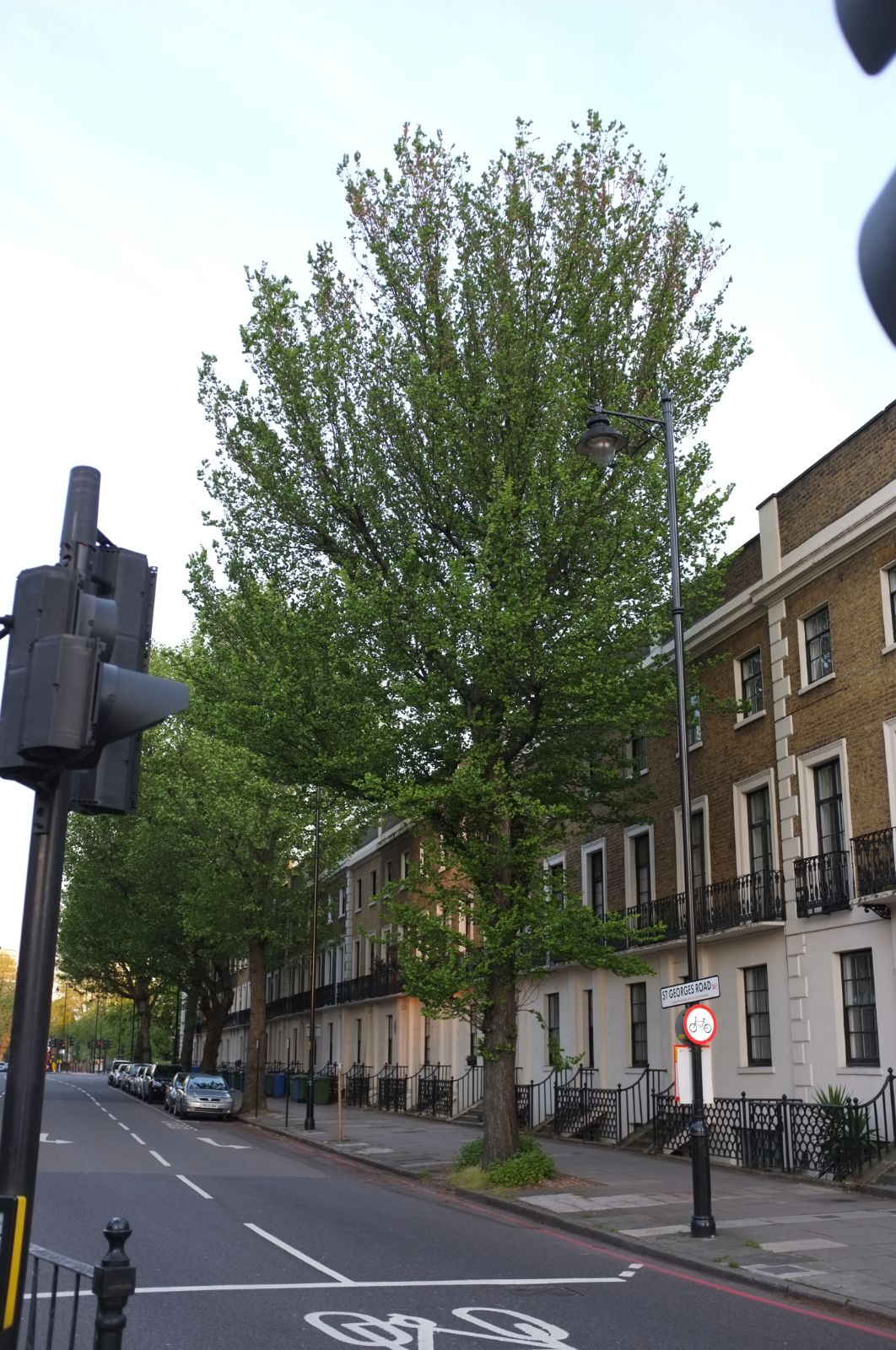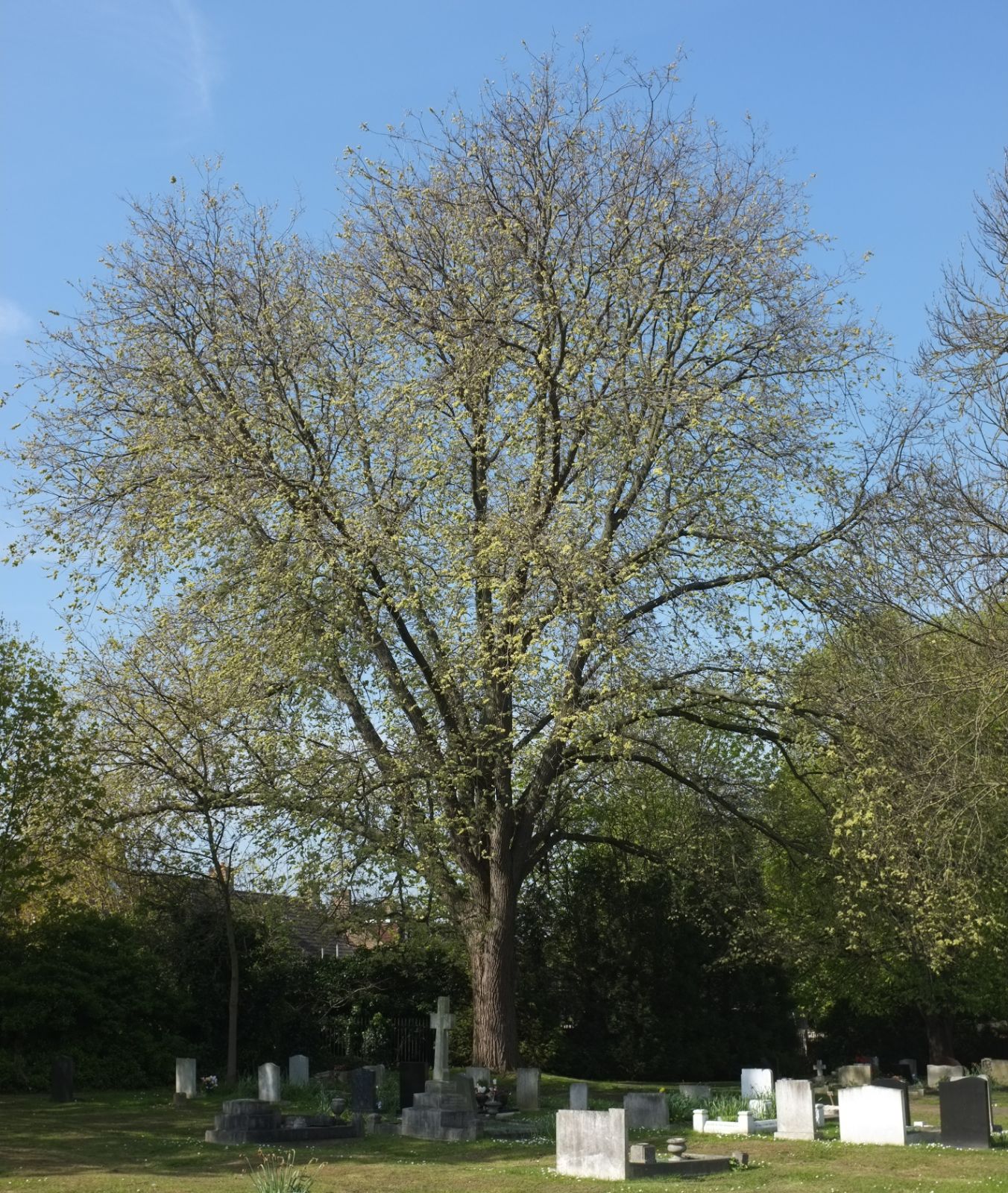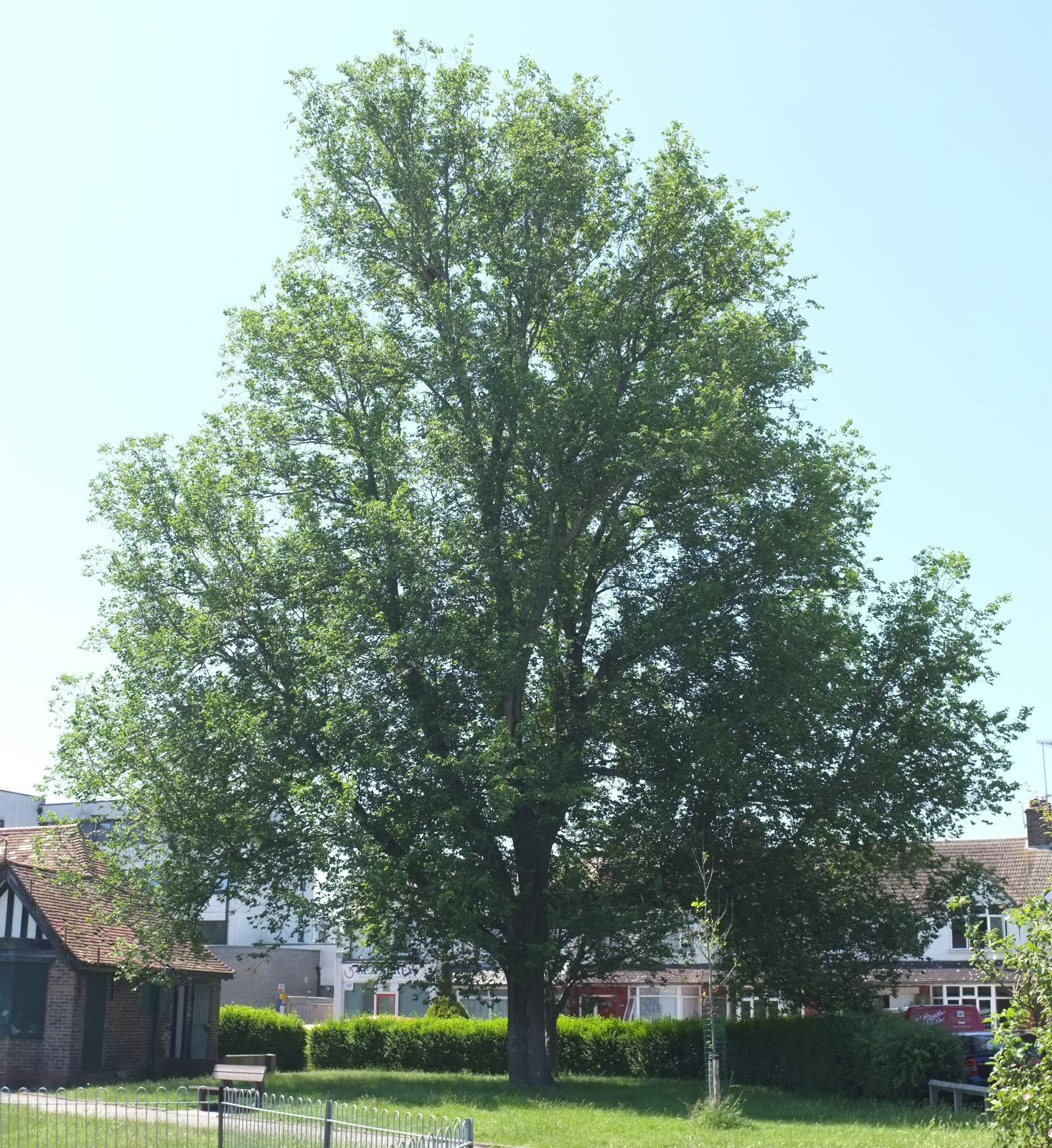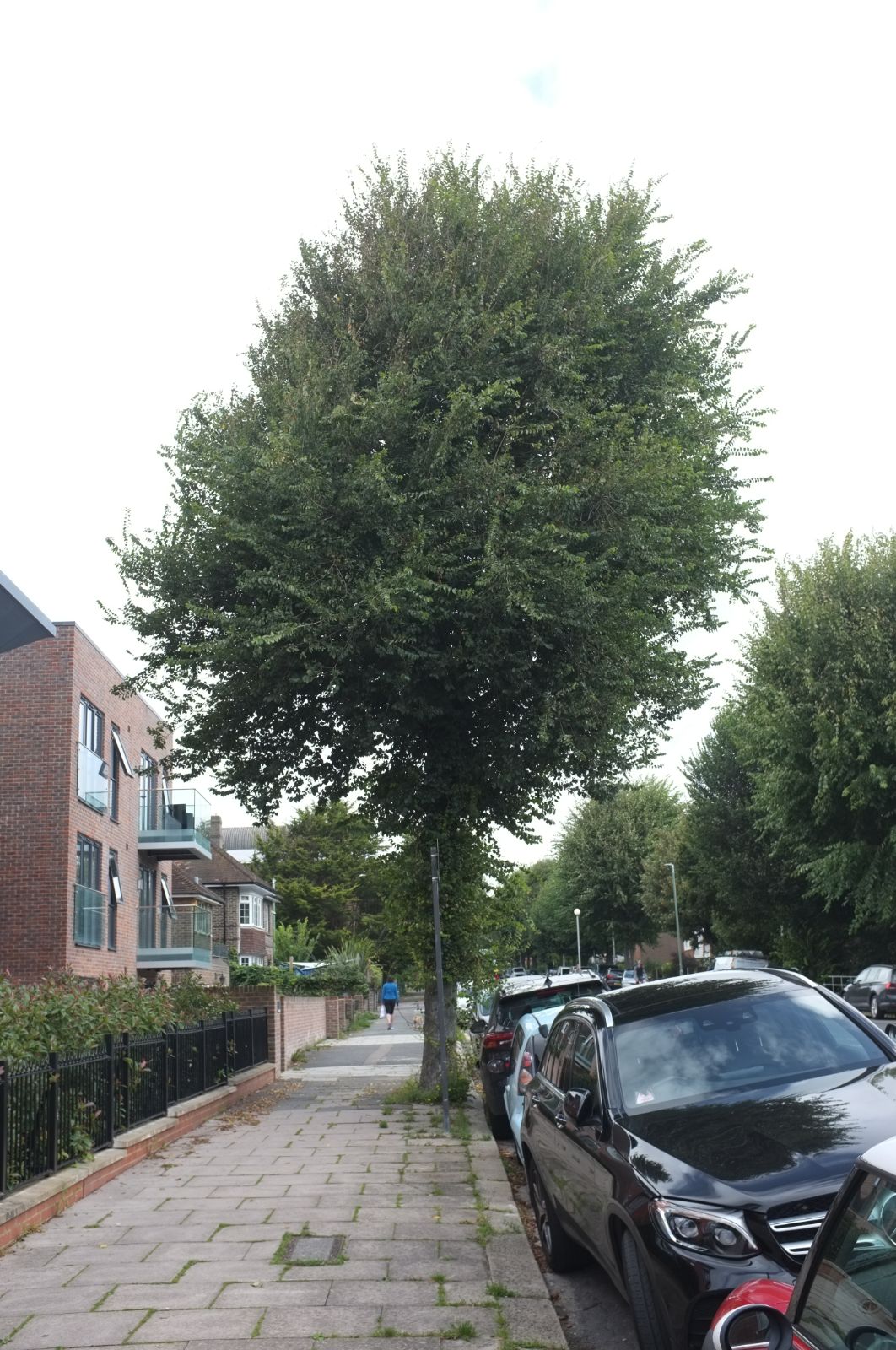Ulmus × hollandica
Credits
Article from Bean's Trees and Shrubs Hardy in the British Isles
Recommended citation
'Ulmus × hollandica' from the website Trees and Shrubs Online (treesandshrubsonline.
Genus
Synonyms
- U. × dippeliana Schneid.
Other taxa in genus
- Ulmus americana
- Ulmus angustifolia
- Ulmus bergmanniana
- Ulmus campestris
- Ulmus canescens
- Ulmus carpinifolia
- Ulmus castaneifolia
- Ulmus chenmoui
- Ulmus coritana
- Ulmus crassifolia
- Ulmus davidiana
- Ulmus elliptica
- Ulmus gaussenii
- Ulmus glabra
- Ulmus glaucescens
- Ulmus japonica
- Ulmus laciniata
- Ulmus laevis
- Ulmus lamellosa
- Ulmus macrocarpa
- Ulmus parvifolia
- Ulmus plotii
- Ulmus procera
- Ulmus pumila
- Ulmus rubra
- Ulmus serotina
- Ulmus szechuanica
- Ulmus thomasii
- Ulmus villosa
- Ulmus 'Viminalis'
- Ulmus wallichiana
- Ulmus wilsoniana
In their original wild state the wych elm, U. glabra, and the field or smooth elm, U. carpinifolia, occupied largely distinct territories, and despite their affinity and overlapping flowering-times, can have hybridised but rarely. But with deliberate planting, and the destruction of natural barriers, the two elms were brought into closer contact, and the results of their crossing, showing hybrid vigour, having been selected by man at the expense of both parents. And these hybrids have in turn interacted with the original wild species, so that a very complex elm population eventually emerged, which has been the despair of taxonomists. The hybridity of some elms was first recognised only early this century and even then, and much later, many cultivars were treated as ‘varieties’ of one or the other parental species. Intercrossing between hybrids, and back-crossing with the original species, no doubt explains the variation that exists in this group, and even the various stunted and small-leaved elms that have on occasion arisen in seed-beds and been put into commerce are precisely what geneticists would expect to occur in the later generations of hybrid-with-hybrid crosses. The fact that self-sterility is prevalent in the elms makes suspect the status of the great majority of elm cultivars originally raised from seed.
The taxonomic treatment of the European hybrid elms would be simple if the field or smooth elm could be regarded as a single but variable species. All the hybrids between it and U. glabra would then fall under U. × hollandica. It is, however, Dr Melville’s view that U. × hollandica is a triple hybrid – U. glabra × U. carpinifolia × U. plotii – and that the elm populations of Belgium, Holland, France and Germany consist ‘almost exclusively’ of trees of this parentage (Stace, ed., op. cit., pp. 295–6). The simple hybrid between U. glabra and U. carpinifolia is in his view typified by the Huntingdon elm, U. vegeta, and elms of this parentage would accordingly take the name U. × vegeta. The Huntingdon elm itself, as the typical nothomorph (form) of this group, would be U. × vegeta ‘Vegeta’, not U. × hollandica ‘Vegeta’, which would, however, be its correct name if U. carpinifolia is interpreted in a broad sense. In the following account the cultivar name of the hybrid is placed directly under Ulmus.
U. ‘Belgica’. Belgian or Holland Elm. – A massive tree to about 120 ft high, broad-crowned when old. It is nearer to U. glabra than it is to U. carpinifolia, but the young shoots are more slender and become glabrous by autumn, and the leaves are narrower with a coarsely toothed, more elongated apex. It was once a common tree in the Low Countries, prized for its rapid growth even on poor soils and its good resistance to wind and atmospheric pollution. But it was one of the first elms to fall victim to the outbreak of Dutch elm disease in the 1930s (U. belgica Burgsd.; U. × hollandica var. belgica (Burgsd.) Rehd.; U. hollandica Späth, not Mill.).
U. ‘Dampieri’. – A medium-sized tree of narrowly pyramidal habit, broadening with age. Branchlets short, slender, glabrous. Leaves bright green, of firm texture, broadly ovate to elliptic, slightly oblique at the base, to 21⁄2 in. long, shortly stalked, deeply toothed, almost glabrous on both sides, except for axillary tufts. Little known in this country, it was used as a street-tree in Holland and in Belgium, where it originated before 1862. It proved very resistant to the first outbreak of Dutch elm disease. It has been placed under both U. carpinifolia and U. glabra, but was considered by Schneider to be a hybrid between them (U. campestris var. nuda subvar. fastigiata Dampieri Wesm.; U. montana Dampieri Kirchn.; U. × dippeliana f. dampieri Schneid.; U. nitens var. Dampieri Henry).
There is a golden-leaved branch-sport of this – U. ‘Dampieri Aurea’ (‘Wredei’).
U. ‘Hollandica’. Dutch Elm. – A large tree, up to 110 ft in height, of somewhat open, sparse branching; trunk rather short, up to 6 ft in diameter; young shoots slightly hairy. Leaves oval or ovate, 21⁄2 to 5 in. long, 11⁄2 to 3 in. wide, taper-pointed, one side cordate at the base, and developed farther down the stalk than the other side, which is tapered, upper surface dark shining green, glabrous or nearly so, the lower one also bright green, downy in the vein-axils and along the midrib, nearly glabrous elsewhere; veins in ten to fourteen pairs; stalk downy, 1⁄4 to 3⁄8 in. long. Samaras between ovate and obovate, 3⁄4 to 1 in. long, with the seed close to the terminal notch. (U. hollandica Mill., sens. strict.; U. major Sm., nom. illegit.).
In its botanical characters this elm most resembles U. carpinifolia, but the twigs are stouter, the leaves and fruits much larger, and the habit more open. It is quick-growing and several fine specimens existed in the older parts of Kew Gardens, but all these are now gone, having become decrepit, or been killed by the Dutch elm disease, to which this clone is very susceptible. One, felled about 1910, was estimated to have been some 150 years old and measured 92 × 131⁄2 ft; another, felled 1967, was 88 × 143⁄4 ft.
According to Miller, ‘Hollandica’ was introduced to Britain from Holland at the end of the 17th century – an origin rejected by Elwes and Henry on the grounds that there is no record of the Dutch elm, as we call it, ever having been planted in Holland, where the common clone is, or rather was, ‘Belgica’. Hybrids similar to the Dutch elm have no doubt arisen spontaneously in Britain, and the clone ‘Hollandica’ may have done so originally, if Miller was indeed wrong in attributing to it a Dutch provenance. It is possible, however, that the Dutch elm was grown in Holland in the 17th century, later being replaced by ‘Belgica’, which is believed to have originated at the end of the century. In any case, the name U. major Sm. preferred by Elwes and Henry is illegitimate, since it is a re-naming of U. hollandica Mill., which Smith cited as a synonym.
U. ‘Smithii’. Downton Elm. – Branches ascending; branchlets pendulous, hairy when young, developing corky ridges. Leaves rather thick, glabrous and glossy above, downy beneath, coarsely double-toothed; lateral veins in fourteen to sixteen pairs; petiole about 3⁄4 in. long (U. × smithii Henry; U. glabra Mill. var. pendula Loud.; U. pendula W. Masters).
This elm was found at Downton Castle early in the last century among seedlings bought from Smith of Worcester. It is related to the Huntingdon elm (‘Vegeta’).
U. ‘Vegeta’. Huntingdon Elm. – This fine elm, according to information given to Loudon by John Wood of Huntingdon, in 1836, was raised in the nursery of his firm about the middle of the 18th century from seed gathered in Hinchingbrook Park. It is, no doubt, a hybrid between U. glabra and U. carpinifolia, and like many hybrid trees, is of remarkably vigorous growth. One of the largest of all elms, it reaches 140 ft in height, forming a thick short trunk 5 or 6 ft in diameter with ascending branches. Leaves up to 5 or 6 in. long, more than half as wide, glabrous above and downy beneath only in the leaf-axils. Samaras oval, up to 7⁄8 in. long, the seed not reaching to the notch at the top. This last character and its less downy leaves distinguish it from U. ‘Hollandica’. The veins, too, are more numerous (fourteen to eighteen pairs) than in ‘Hollandica’. According to Elwes it has the defect of splitting in the trunk due to its habit of forking low down. This, however, can be prevented by timely pruning. The tree produces suckers. (U. glabra var. vegeta (Lindl.) Loud.; U. vegeta Lindl. in Hort. Cantab., nom. nud.; U. × dippeliana f. vegeta (Loud.) Schneid.; U. Huntingdonii Hort.).
Elms similar to the Huntingdon occur, apparently naturally, here and there in central and southern England, and other trees of the same parentage may have been raised in nurseries and distributed. According to Loudon, several elms of the Huntingdon type were grown by the nurseryman Masters of Canterbury (whose son, Dr Maxwell Masters, was editor of the Gardeners’ Chronicle, 1865–1907). The elm raised by the nurseryman Gill of Blandford, and distributed as U. montana superba, may also have been of the same parentage as the Huntingdon (Gard. Chron., 1845, advertisement p. 653), and may be the hybrid elm ‘Superba’ later cultivated to some extent in the Low Countries and in Germany (cf. Elwes and Henry, op. cit., p. 1873, and footnote 5). A great elm at Magdalen College, Oxford, when blown down in 1911 was found to contain 2,787 cubic feet of timber. It had been identified as U. × vegeta by H. J. Elwes only six years earlier, having previously been taken for a wych elm. Almost certainly it antedated the true Huntingdon. Other elms resembling the Huntingdon may be seedlings of it, as it is fairly fertile. The sale of its seedlings by the nurseryman Rivers as ‘Huntingdon elm’ was the subject of a court case which attracted much interest in gardening circles at the time and will no doubt feature in a history of the nomenclature of cultivated plants, if this is ever written; see Gard. Chron., 1847, pp. 507, 526.
Following the earlier outbreak of Dutch elm disease a breeding programme was started in Holland with the objective of raising cultivars resistant to the disease. Some have been distributed, and introduced to Britain, but they were tested against the earlier and milder strain of the disease and have either failed to resist the new and more virulent strain or have yet to prove themselves in the new circumstances. Some have other defects. In order of release these clones are: ‘Christine Buisman’, ‘Bea Schwarz’, ‘Commelin’ and ‘Groeneveld’. Of these ‘Commelin’ is certainly very susceptible to the new strain of Dutch elm disease. It, and ‘Groeneveld’, are the results of deliberate crosses between selected trees of U. carpinifolia and U. glabra. ‘Christine Buisman’ was raised from Spanish seed and may be a clone of U. carpinifolia. In case ‘Groeneveld’ turns out to be resistant to the new strain, it should be noted that it is likely to make a small tree, with a well-developed central stem but no more than 50 ft high (Fontaine, op. cit., p. 49).


